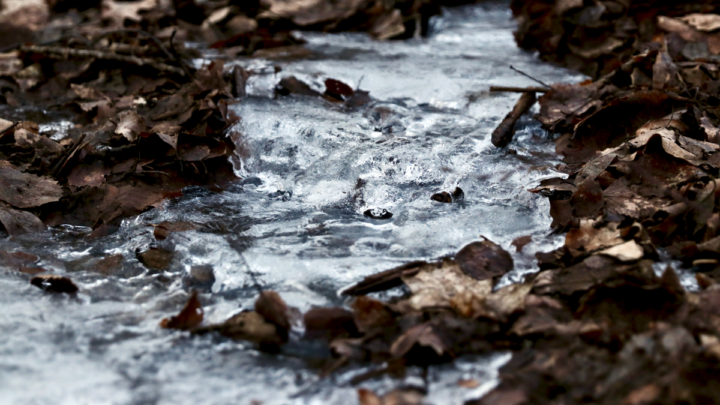“Yesterday evening I was working on a slightly rising woodland slope covered with dry and mouldering beech leaves. The ground was light and dark reddish brown, emphasized by the weaker and stronger shadows of trees casting half-obliterated stripes across it.
The problem, and I found it a very difficult one, was to get the depth of colour, the enormous power and solidity of that ground – and yet it was only while painting it that I noticed how much light there was still in the dusk – to retain the light as well as the glow, and depth of that rich colour, for there is no carpet imaginable as splendid as that deep brownish-red in the glow of an autumn evening sun, however toned down by the trees.”
This is an excerpt from a letter written by Vincent van Gogh to his brother Theo. He is recounting the work on a current painting. Even with all the language van Gogh is able to use to describe the color of this scene, he still considers this painting a difficulty. He remarks with great surprise how much white paint it takes to get the array of dark colors on the floor of this forest at dusk.
In a moment of prayerful exclamation van Gogh writes, “Don’t let me leave before there is something of the autumnal evening in it, something mysterious, something important.” Douglas Christie reflects on this letter by van Gogh in his book The Blue Sapphire of the Mind. He points to the power and influence of attention that van Gogh is able to draw on. Christie wonders, What would it be like if we all sought out that level of attention to the created world, God’s world, and strove to imitate it in our own creative work? How would that attention to nature influence how we use our mediums in ministry?
Could we then hear the babbling brook and be able to listen to the babbling children who have the same ability to change the landscape they run through? Could we see the gleaming light of the moon on a snowy field and accept the gleaming light of the person holding the cardboard sign who could also illuminate a dark space? Could we smell the flowers from a far-off market carried to us by a subtle wind and recognize how our actions, no matter how isolated, yet affect people we haven’t seen?
Our depth of understanding of creation might then begin to benefit not only our work, but our relationship to creation. This earth that we live on would no longer be space to act in but become an inspiration to act on. Better yet, we might become a partner to the earth in the work she is already doing.
Don’t forget to check out the monthly tip sheet from the United Methodist Creation Justice Movement. https://umcreationjustice.org/june-tips-what-we-can-do-together/
The June issue focuses on things we CAN do as the body of Christ to care for God’s good creation. One of the tips we CAN do is reduce greenhouse gas emissions by switching to products that reduce non-recyclable, non-compostable waste and save trees. A UM laywoman from Cary was instrumental in starting the amazing Toward Zero Waste movement, and their website and Facebook page are a wealth of resources, including a green business directory. See the Resources below for links to TZW and to one of the tree-saving products that will be given away at Annual Conference. Stop by the Creation Care Team’s display table for a free sample.
Resources
- Toward Zero Waste https://towardzerowaste.org
- Bamboo toilet paper https://us.whogivesacrap.org
Upcoming Events
- June 15-18 NC Conference Creation Care Team at Annual Conference
Breakout session and booth with giveaways
- July 18-Aug 11 UM Earthkeepers Training, 8.5 hours online https://umcmission.org/earthkeepers/
- September Season of Creation—Save the date for sermon series, Bible studies, and activities focused on care of creation. Stay tuned for resources.
As a church, WE CAN embrace zero-waste. By setting out recycling bins, we send an important message and help people recycle worship bulletins and paper from offices. By setting up a composting system, after meals together we can keep food waste from landfills and return the nutrients to the soil.

